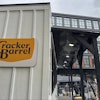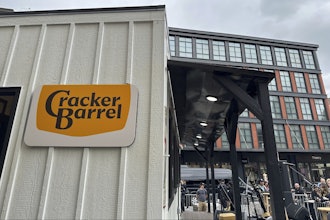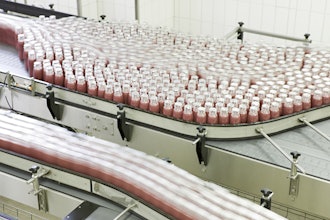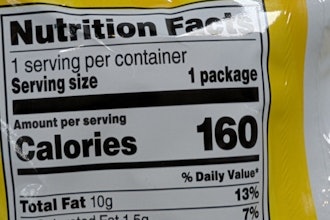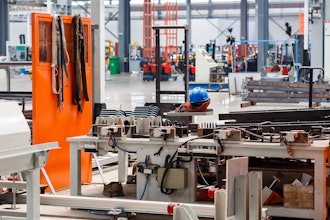
 Doug Niemeyer
Doug NiemeyerFood manufacturers demand a lot from their supply chains to get the right products to the right places at the right time. Speed, efficiency, global-readiness and regulation compliance are just a few of the challenging dynamics. Now, think of the ripple effect this has on product labels as they can either be a supply chain asset or a hindrance. Food Manufacturing asked Doug Niemeyer, General Manager of leading barcode and RFID labeling solutions provider TEKLYNX Americas, to share his experience on how some food companies are utilizing labeling environments to help them keep better pace with these supply chain demands.
Q. What is Enterprise Label Management (ELM) and how does it differ from a standard labeling environment?
The biggest difference is with the level of integration and automation. Often, food manufacturers not leveraging ELM rely on individual processes, manual data entry and disparate systems for labeling needs. By contrast, ELM is a unified, centralized labeling system that allows for centralized management, design, integration and printing all combined into one system. ELM is made up of four primary components:
- The ability to create and print barcode labels used for shipping, inventory, products, etc.
- Label approval, traceability, security, storage, & version control for all labels created and printed
- Print automation to significantly reduce human interaction from the printing process
- A browser-based print interface for seamless label printing locally and around the globe
Q. Why should food manufacturers consider ELM?
Food manufacturers are operating in a challenging environment. They must produce and ship products fast while meeting mounting and ever-changing regulations, guarantee what they produce is safe and track and trace it in a moment’s notice in the event of a recall. ELM helps reduce errors because it integrates labeling with existing business systems. This is critical when you think of all of the labels involved. For example, a cheese manufacturer may have blocks, cubes, slices and shreds in multiple sizes in a single variety of cheese, with each type requiring a different label size, design and format. Label approval capabilities which are enforced by software also help to reduce misprints. Beyond label accuracy, food companies leverage ELM to make labeling operations more efficient. For a leading supplier of premium beef and pork products, an ELM integration expedited the company’s speed-to-market for new products while eliminating the need to allocate trucks for label movement significantly reduced shipping costs. Further, food manufacturers can leverage ELM to accommodate industry-specific considerations such as the ability to integrate label printing with weighing scales. Companies that leverage ELM can also allow their supplier networks to easily access and print required labels.
Q. What size company is ELM best suited for?
There is a misconception that ELM is best suited for global enterprises or large scale food manufacturers. This couldn’t be further from the truth. Food manufacturers of all sizes can realize big benefits from ELM. Any company looking to consolidate, standardize, and/or centralize label management can benefit from ELM. In fact, organizations with limited IT infrastructure and/or resources will realize an immediate impact as ELM’s browser-based printing interface eliminates the need for local software installations, reducing IT overhead.
Q. How long does it take to implement ELM?
While implementation times vary from company to company, at TEKLYNX the average ELM implementation timeline is three to four months as companies are guided from discovery all the way to training and roll out.
Q. How does the investment in ELM generate a ROI?
Food manufacturers realize a return on their ELM investment in countless ways, yet the specific manner in which they do so varies from company to company. Here are just a few examples of how ELM generates a ROI:
- ELM improves process efficiency and because labeling is a highly repeated process, the savings add up quickly.
- Integrating label printing into your existing business system (i.e. your ERP) takes manual steps out of the process, saving time and reducing errors.
- Integration enables automation which increases labeling speed while preventing costly mistakes.
- Built-in approval rules for label design and printing streamline processes and reduce misprints and errors.
- Centralized IT management means that IT staff won’t be managing local installs, but will push out licenses from a central server, saving time.
- Minimized manual processes and control access can reduce the need to train new employees on a regular basis.
Q. How do I know if ELM is right for my company?
The answer to this begins with an assessment of your current labeling environment. Think specifically about your labeling processes. What specific steps do users take to print labels? Do all users follow these steps, or are there different processes in different departments. Does the process vary by facility or even by product? Where are label templates stored? In one location or at multiple locations? The answers to these questions will help you start to understand how efficient your labeling environment is. Download the Four Signs Your Business Should Implement Enterprise Label Management ebook or learn more at teklynx.com. Our team is here, interested to hear from companies and always eager to listen and understand in order to help wherever the requirements lead.
Doug Niemeyer is General Manager at TEKLYNX Americas.


